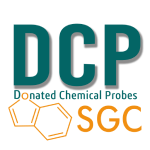BAY-826
Inhibitor of TIE1, TEK, DDR1, DDR2
Structure
In Cells
In Model Organisms
Probe BAY-826 is in the process of SERP review.
Please continue to check back for new reviews and commentary.
SERP ratings and comments
SERP Ratings
SERP Comments:
TIE-1, DDR1, DDR2 and STK10/LOK are reported as the only kinases of 456 tested within 4x of TIE-2 potency. Percent inhibition at 100 nM for the entire panel of kinases appears to have been disclosed to the SGC, or generated by the SGC, here: https://www.sgc-ffm.uni-frankfurt.de/chemProbes#!kinomescandataview/BAY-826. P38a and EPHB6 appear to be additional selectivity concerns.
It should also be noted that the PD effect claimed was not consistently observed across all model systems, in part due to low Tie-2 expression in the tissues of interest, though the authors suggest differential sensitivity to a Tie-2 mechanism among the models tested may also contribute. Regardless, additional in vivo validation would be valuable.
Rebastinib is likely the current pharmacologic standard for Tie-2, with considerably more characterization in the literature, some disclosed selectivity information (see Chembl in addition to primary literature), greater potency, lower in vivo dose, etc. By contrast, the DOI reported here appears to be the only peer-reviewed article characterizing BAY-826.
Having said that, BAY-826 likely represents a chemically orthogonal tool for Tie-2 inhibition that would complement experiments with Rebastinib.
(last updated: 15 Jun 2020 )
